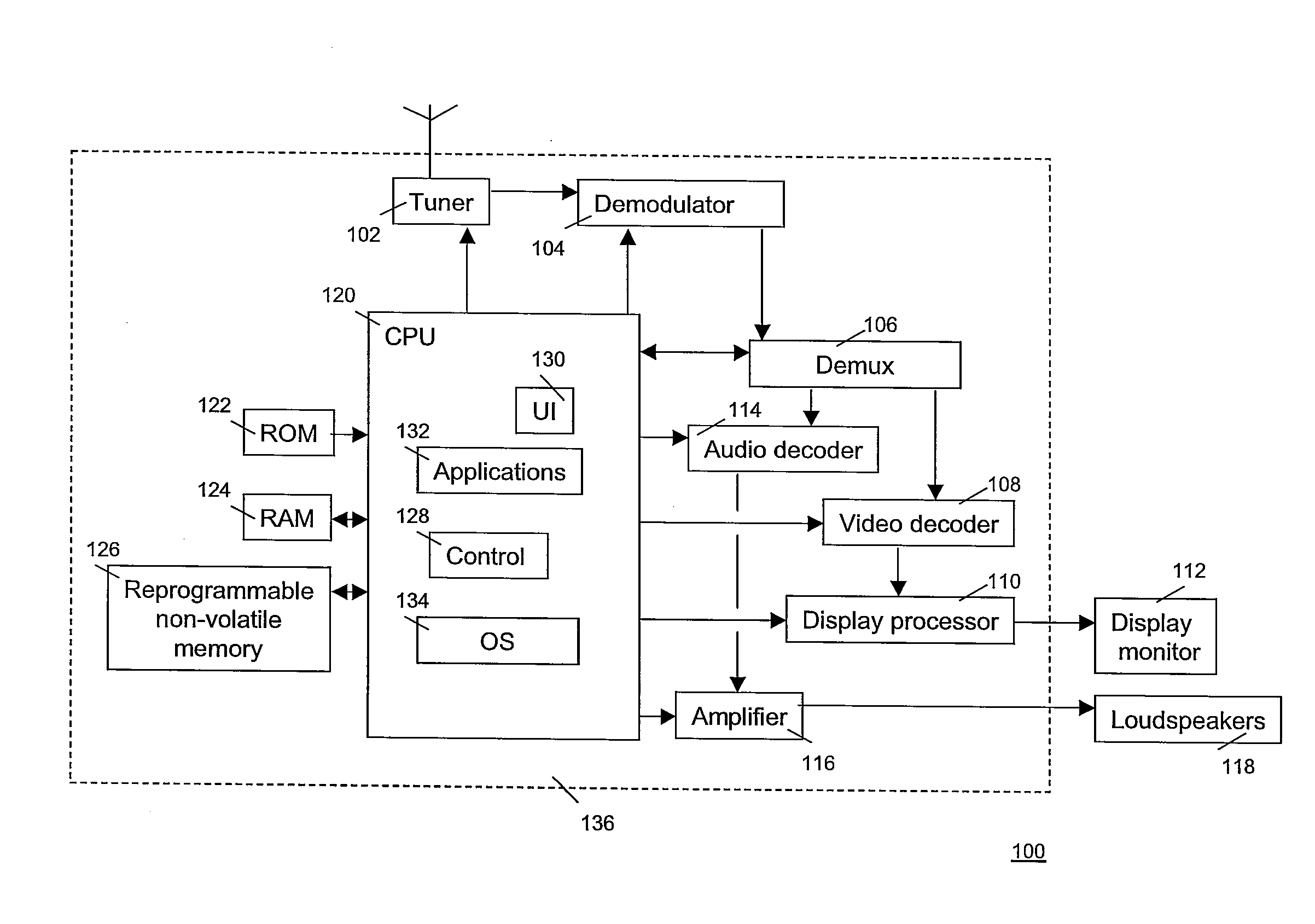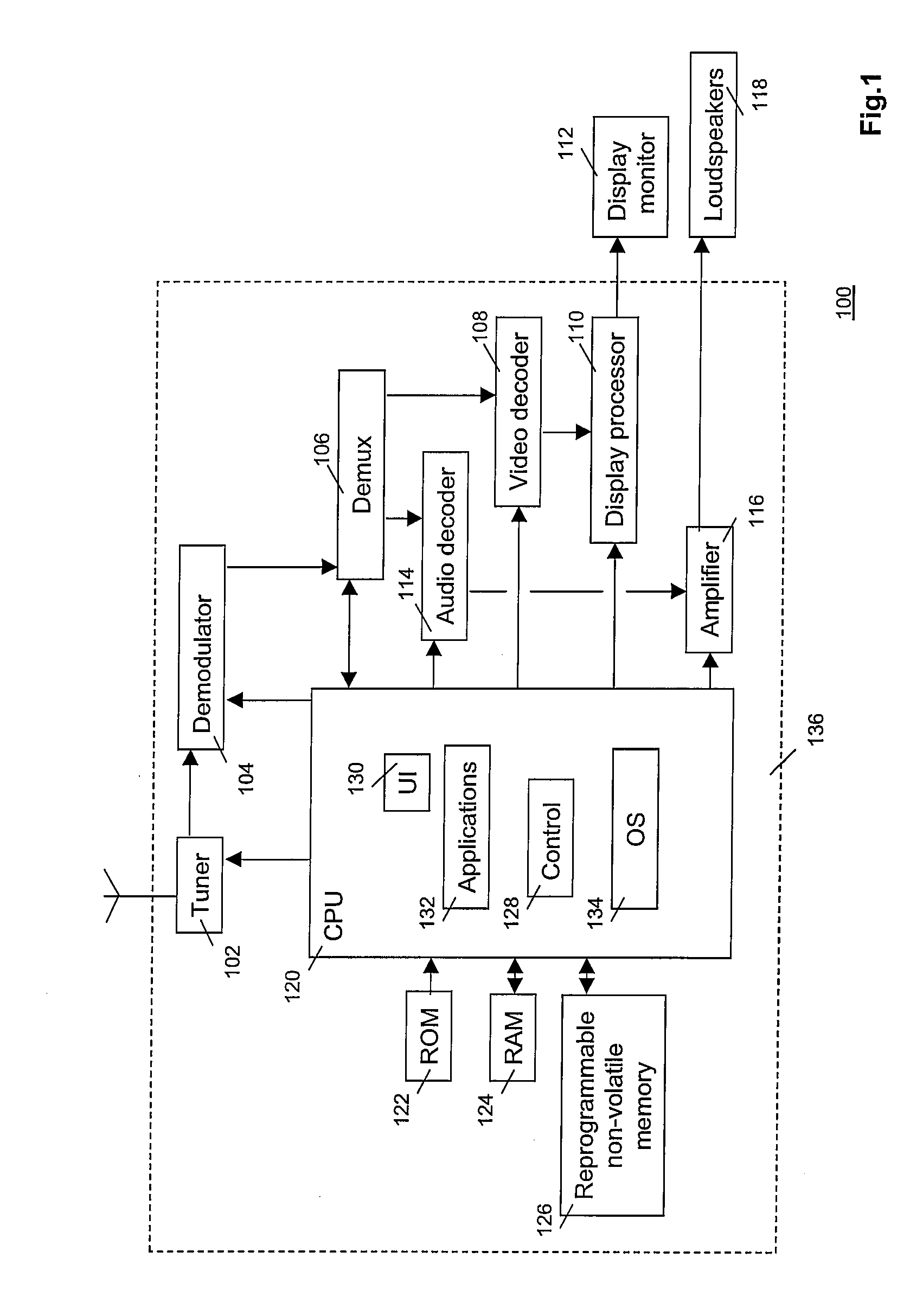Removing 2fh cross talk for TV
a cross-talk and tv technology, applied in the field of removing 2fh cross-talk for tv, can solve the problems of multiple-chip module configuration and soc configuration, perceptible artifacts in the images displayed, and/or perceptible artifacts, and achieve the effect of maintaining a level of power consumption of the digital sub-system and reducing artifacts in the rendered imag
- Summary
- Abstract
- Description
- Claims
- Application Information
AI Technical Summary
Benefits of technology
Problems solved by technology
Method used
Image
Examples
Embodiment Construction
[0019]Artifacts occur in the images rendered on a 100 Hz TV as a result of the vertical and horizontal blanking intervals. These intervals cause transitions between high activity and low activity of the TV's digital processing parts which in return cause disturbances on the power supply lines. By keeping the digital processing parts active during the blanking intervals, the artifacts are removed.
[0020]FIG. 1. is a block diagram of a digital TV receiver 100. Receiver 100 includes a tuner 102, a demodulator 104, a demultiplexer 106, a video decoder 108, a display processor 110, a display monitor 112, an audio decoder 114, an amplifier 116, loudspeakers 118, a central processing unit (CPU) 120, a modem 20, a random access memory (hereinafter “RAM”) 21, a non-volatile storage 22, a read-only memory (hereinafter “ROM”) 24, and input devices 25. Each of these features of receiver 100 is well-known to those of ordinary skill in the art; however, descriptions thereof are nevertheless provid...
PUM
 Login to View More
Login to View More Abstract
Description
Claims
Application Information
 Login to View More
Login to View More - R&D
- Intellectual Property
- Life Sciences
- Materials
- Tech Scout
- Unparalleled Data Quality
- Higher Quality Content
- 60% Fewer Hallucinations
Browse by: Latest US Patents, China's latest patents, Technical Efficacy Thesaurus, Application Domain, Technology Topic, Popular Technical Reports.
© 2025 PatSnap. All rights reserved.Legal|Privacy policy|Modern Slavery Act Transparency Statement|Sitemap|About US| Contact US: help@patsnap.com



